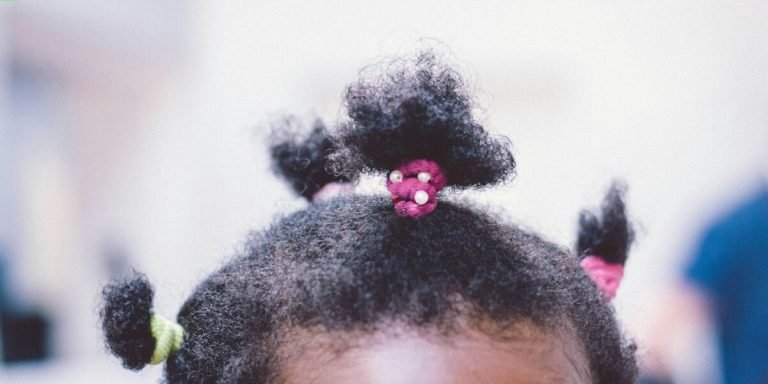How to Care for Hair Extensions for Long-Lasting Shine and Strength
The key to maintaining the lustrous sheen and strength of your hair extensions lies in how well they are taken care of. Learning “how to care for hair extensions” not only ensures their longevity but also keeps them looking as natural and radiant as possible. It is essential that you establish a regime that aids in preserving the shine, texture, and overall quality.
Hair extensions need regular maintenance just like our natural locks do – but with some distinctions. These specific types of treatments can be slightly different than what you’re used to if this is your first time using hair extensions. Be it synthetic or human hair-made ones; all require targeted strategies considering their unique demands.
Did you know?
Did you know? Heat styling can degrade the quality of hair extensions faster. Proper care and minimal use of heat will retain their shine and strength for longer periods.
Understanding Hair Extensions: Types and Materials
Hair extensions have revolutionized the beauty industry, offering an easy way to add volume and length to your strands. However, their care differs significantly from natural hair due to differences in types and materials used.
Notably, there are various kinds of hair extensions available today; ranging from tape-ins, clip-ins to sewn-in or weft extensions. Each type carries its unique requirement for maintenance and care. For example, while you can freely wash and style sewn-in extensions like natural hair – since they’re often made of human locks – it is advisable not do so as frequently with synthetic equivalents because these could easily lose shape or color upon prolonged exposure to heat or chemical products.
100% Remy human hair extensions offer higher quality and longevity for several reasons:
- They stay vibrant even after multiple washes and heat styling.
- The direction of the cuticle in these extensions mirrors natural hair, reducing fiber friction.
- This similarity to natural hair prevents tangling and ensures smoothness throughout their use.
- As a result, they are less prone to breakage than cheaper ‘non-Remy’ options, leading to a longer lifespan.
Differentiating Between Synthetic and Human Hair Extensions
Hair extensions can elevate your hairstyle to new heights. However, caring for them entails more than just routine brushing and washing. Their longevity largely depends on the type of hair they’re made from – synthetic or human.
One might wonder how to care for hair extensions if they are made synthetically? Synthetic hair extensions offer an affordable alternative but come with limitations in versatility and durability compared to their human counterparts. Constructed from fine, plastic fibers which mimic real hair’s texture, these cannot withstand heat styling well nor do they respond favorably towards strong shampoos or conditioners.
Cleaning requires a delicate touch—start by detangling gently with a wide-tooth comb. Next, fill up a basin with lukewarm water mixed mild shampoo specifically designed for synthetic materials then submerge the extension piece fully till saturated before massaging softly; rinse thoroughly afterward while resisting wringing it out aggressively that could lead potential damage .
Drying should happen naturally — lay flat upon towels allow proper air flow avoiding artificial dryers entirely as high temperatures may cause permanent deformations its structure.
Human hair extensions are popular because they can be treated like our own hair. Donors from around the world provide the hair, which is meticulously processed to create a realistic product that adds length and volume. The main advantage of human hair extensions is that you can color and style them as desired without significant damage. However, to avoid reducing their lifespan, avoid over-processing or using harsh products on them. To maintain their quality for longer periods, always consult a certified stylist.
Assessing Quality: What to Look for in Extension Material
In the world of hair extensions, quality matters a lot. As you learn how to care for hair extensions in 2023, it’s essential to first understand which materials they’re made from and what should alert your attention.
Firstly, let’s talk about human versus synthetic. Human hair is often more desirable due to its natural look and feel. It allows users versatility with styling as heat can be applied without worrying about damage; however, high-quality synthetic versions are becoming increasingly common too.
These are typically cheaper but may not offer the same level of realism or durability.
Secondly inspect thickness consistency – A good extension should maintain consistent thickness from top to bottom avoiding unnaturally thin ends commonly called ‘rat tails’. Consistent density indicates less fillers were used thereby giving an overall better quality.
Next pay attention to the wefts – strong stitching on weft edges ensures that shedding will be minimal over time after brushing or washing.
Finally check out color uniformity- Uniform colors throughout means there has been fewer dyes used thus making them safer for prolonged use.
Remember all these details when buying your next set because knowing how to properly assess extension material isn’t just advantageous—it’s necessary! So now that you know what makes up excellent material standards in hair extensions proceed confidently into achieving those long locks dreams!
Proper Installation Techniques for Long-Lasting Extensions
Ensuring that your hair extensions are correctly installed is an integral part of their care and maintenance. Proper installation not only helps to protect the integrity of your natural tresses but also significantly extends the lifespan of the extensions themselves. Although there are numerous techniques utilized across salons globally, several fundamental practices can make a world difference in how well cared for and sustained your hairpieces remain.
Primarily, before any attachment process begins, it’s essential that both your scalp and locks maintain optimal health conditions. A clean canvas reduced chances of developing infections or damaging either strands during application as you navigate through “how to care for hair extensions.” This cleanliness incorporates regular washing using gentle shampoos infused with moisture-retentive ingredients like argan oil or keratin proteins.
Consider how often you use these artificial strands to ensure their longevity. Using too much heat when styling causes damage over time and reduces the extensions’ ability to blend with your natural hair. This leads to more frequent repurchasing and extra costs. To extend the life of your extensions:
- Go easy on heating tools
- Embrace air-drying methods
Always prioritize quality over quantity, particularly this year as we aim for sustainability amid growing environmental concerns after 2023.
Step-by-Step Guide to Securing Clip-In Hair Extensions
Securing your clip-in hair extensions correctly is the first step towards ensuring their longevity. Here’s a user-friendly guide to help you master this process and better understand how to care for hair extensions in 2023.
Begin by thoroughly brushing your natural tresses. This eliminates any knots, preventing potential damage when installing the clips.
Next, section out your hair beginning from the nape of your neck. Use a tail comb for precision and secure each part with salon-quality clamps until only one layer remains free at the bottom row.
Now it’s time to measure out extension wefts against that segment of loose strands on which they’ll be fitted. Choose those aligning perfectly without extending beyond actual width!
Once suitably sized pieces are selected, start installation from middle moving onto sides while attaching them securely via specially designed combs already embedded within these units.
Professional Methods for Glue, Sew-in, and Tape-In Extensions
Start by sectioning your natural hair. Taking note of where you want the extra length or volume can make a difference in how well your glue-in extensions hold up over time.
When applying the adhesive to each extension – ensure that every piece is coated evenly for secure attachment. This step requires patience but it’s vital when learning how to care for hair extensions effectively.
Press each glued extension onto your natural strands and let it dry completely before moving on to another section of your head.
The process begins with braiding down sections of your own locks into cornrows which will act as anchors for the new weave pieces.
Lastly trim them if necessary then style as desired with low heat setting tools ensuring less damage while maintaining shine and vitality.
Daily Maintenance Routine for Healthy Hair Extensions
Maintaining the lustre and vitality of your hair extensions is an everyday task. But don’t be alarmed; daily care doesn’t mean hours spent in front of a mirror! The process can be as simple or complex as you want it to be.
It all boils down to developing a routine that works well for both you, and more importantly, your hair extensions.
Knowing how to care for hair extensions begins with understanding their specific needs. In contrast to our natural strands, they do not receive nourishing oils from scalp glands which makes them prone towards dryness over time. Thus, adopting suitable hydration methods becomes crucial here.
A mild sulfate-free shampoo followed by deep conditioning aids in retaining moisture coupled with reducing unnecessary roughness caused by harmful chemicals found commonly on conventional products.
The detangling step should never go ignored either when talking about the daily maintenance routine for healthy hair extensions in 2023! Whether washing or styling them – always remember starting from bottom then gradually working up towards roots helps prevent unwanted breakage while preventing tangles at same time too.
Likewise brushing also requires similar gentleness – opt for tools designed particularly dealing such delicate beauties instead regular ones we generally use on native crowning glories: nylon bristles are often preferred since these glide smoothly without causing much friction hence minimizing chances of damage anything else could inflict upon unsuspecting locks!
Gently Detangling without Causing Damage
Maintaining hair extensions requires a careful, specific approach. This section details how to gently detangle your precious additions without causing any damage.
Firstly, always ensure that your hands are clean before handling the extensions. Dirt and oil from our fingers can transfer onto the hairs and cause unnecessary knots or tangles.
Secondly, start by softly brushing through with a wide-tooth comb. Begin at the bottom of each extension weft working upwards gradually until you reach close to its root while being gentle on those areas prone to knotting or catching more than others.
Remember: Frantically pulling will only lead into creating tighter knots which can potentially become worse over time leading towards irreversible damage not just for ones own natural strands but also their expensive add-ons! Take slow strokes instead ensuring no strand is overlooked during this process thus maintaining overall health & longevity in both worlds – real-life plus artificial!
Finally yet importantly if all else fails consider seeking expert advice because sometimes there’s nothing better than having an experienced professional take care of things especially when we’re talking about something dear like our crown glory i.e., our hair — be it original or extended!
Washing and Conditioning Tips for Extension Longevity
Taking care of your hair extensions begins with the right washing and conditioning routine. Knowing how to properly cleanse and condition can make a significant difference in maintaining their longevity.
When it comes time for washing, always opt for lukewarm water instead of hot as extreme temperatures might damage them further.
Choosing the right shampoo is crucial when thinking about how to care for hair extensions. Opting for sulfate-free shampoos will help prevent drying out or damaging your extensions over time.
Next comes conditioning – an equally vital step in ensuring extension health and shine! Like shampoo, select products designed specifically with hair extensions in mind; these tend to be more nourishing without causing buildup that may weigh down upon them unnecessarily.
Apply conditioner mainly focusing on mid-lengths and ends preventing moisture loss while avoiding potential scalp irritation from product build-up near roots.
Finally finishing off by pat-drying using soft towel reducing odds of unnecessary friction leading towards possible tangling issues later; remember never rub roughly!
Hair maintenance post-wash is another area where strategic steps come into play.
Conclusion
In wrapping up, the longevity of your glamorous hair extensions hinges on how you care for them. Cherish and nurture them as if they were your own natural tresses, following our comprehensive guide on ‘how to care for hair extensions’, and they’re certain to reward you with long-lasting shine and unrivaled strength!
We hope we’ve managed to demystify some aspects of extension management- it isn’t rocket science after all! For more enlightening insights into everything ‘Hair Care and Maintenance,’ feel free just to browse around our website. It’s brimming with invaluable resources that will help make every day a good hair day!







